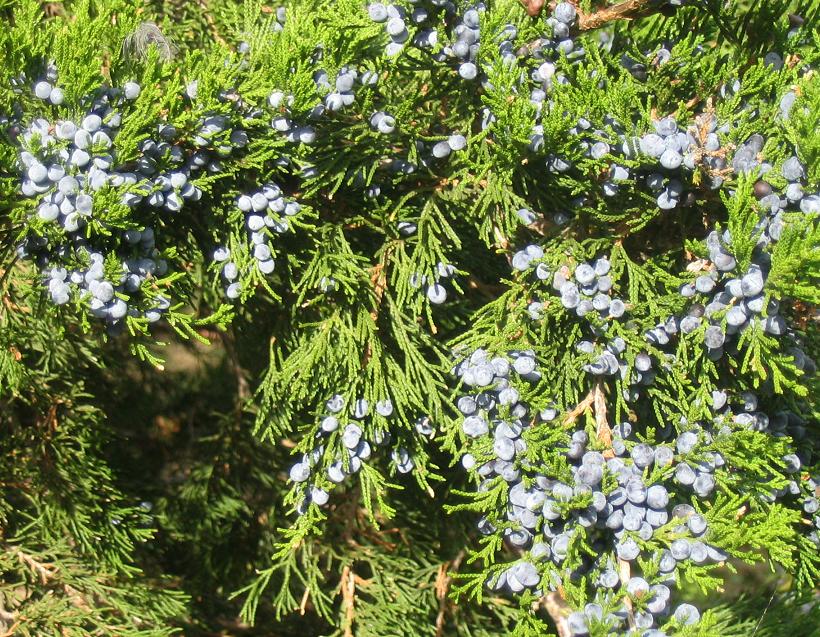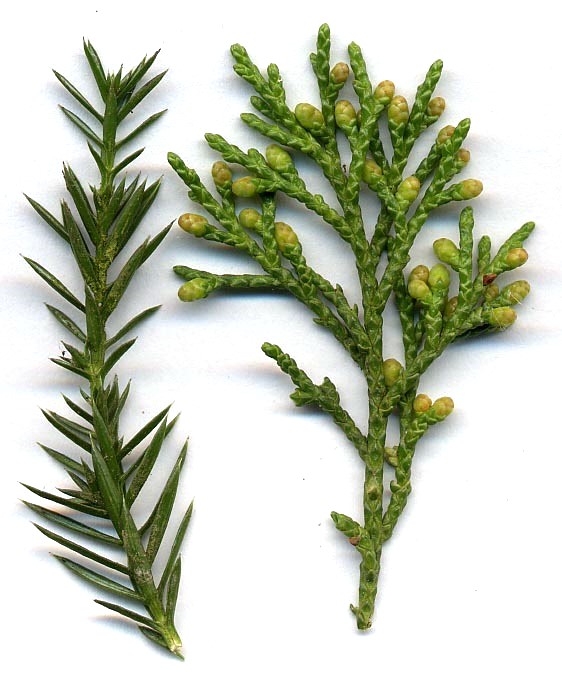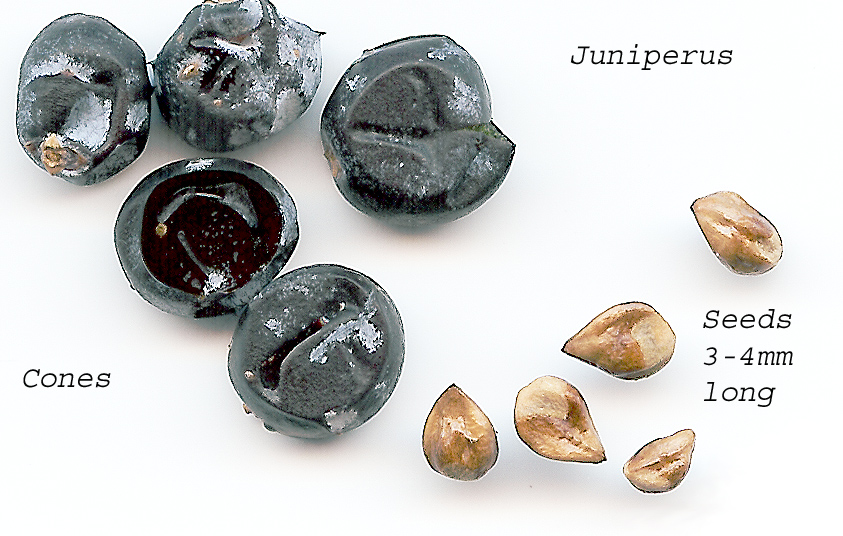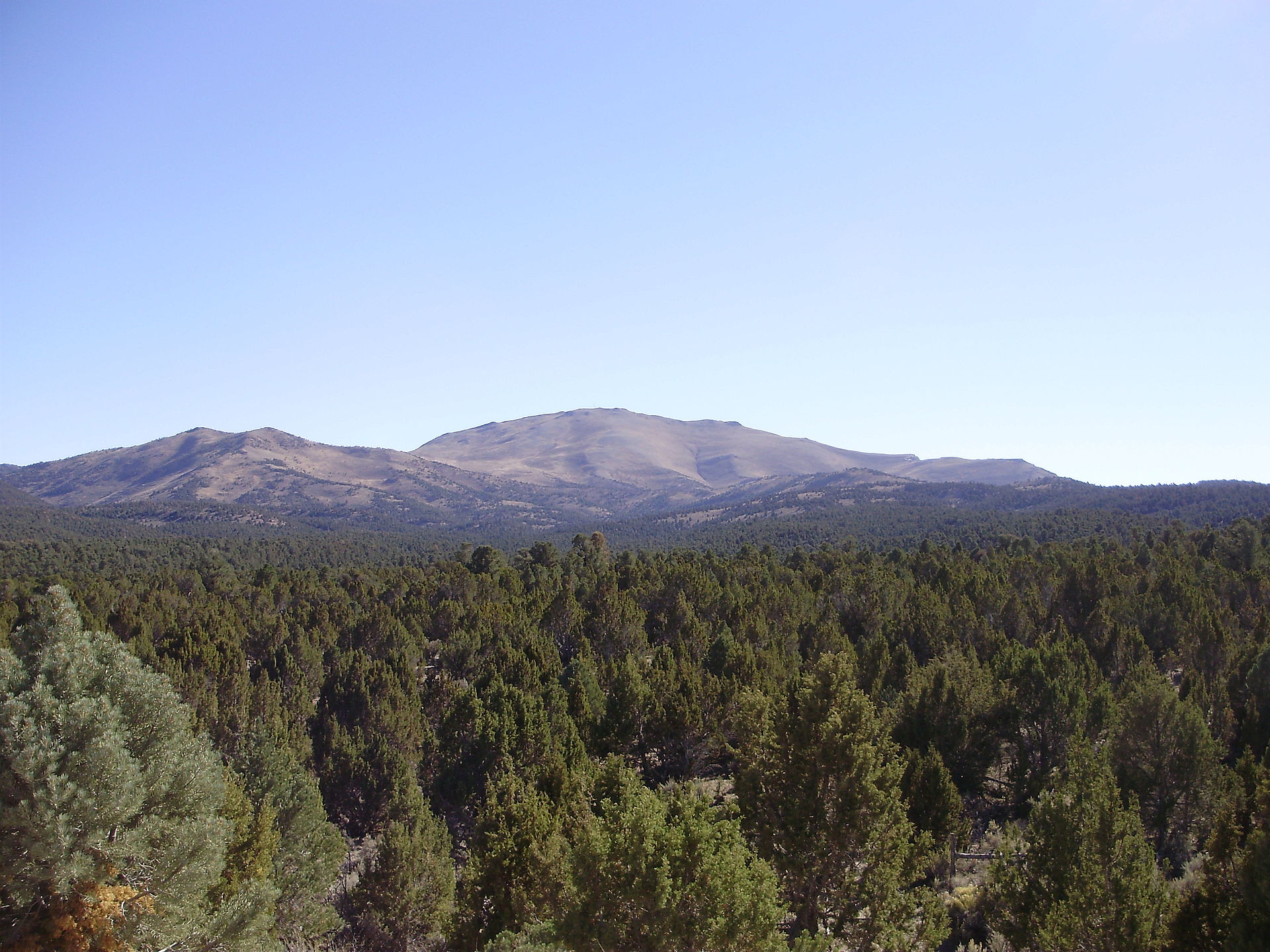2.26: Juniper
- Page ID
- 70376
\( \newcommand{\vecs}[1]{\overset { \scriptstyle \rightharpoonup} {\mathbf{#1}} } \)
\( \newcommand{\vecd}[1]{\overset{-\!-\!\rightharpoonup}{\vphantom{a}\smash {#1}}} \)
\( \newcommand{\dsum}{\displaystyle\sum\limits} \)
\( \newcommand{\dint}{\displaystyle\int\limits} \)
\( \newcommand{\dlim}{\displaystyle\lim\limits} \)
\( \newcommand{\id}{\mathrm{id}}\) \( \newcommand{\Span}{\mathrm{span}}\)
( \newcommand{\kernel}{\mathrm{null}\,}\) \( \newcommand{\range}{\mathrm{range}\,}\)
\( \newcommand{\RealPart}{\mathrm{Re}}\) \( \newcommand{\ImaginaryPart}{\mathrm{Im}}\)
\( \newcommand{\Argument}{\mathrm{Arg}}\) \( \newcommand{\norm}[1]{\| #1 \|}\)
\( \newcommand{\inner}[2]{\langle #1, #2 \rangle}\)
\( \newcommand{\Span}{\mathrm{span}}\)
\( \newcommand{\id}{\mathrm{id}}\)
\( \newcommand{\Span}{\mathrm{span}}\)
\( \newcommand{\kernel}{\mathrm{null}\,}\)
\( \newcommand{\range}{\mathrm{range}\,}\)
\( \newcommand{\RealPart}{\mathrm{Re}}\)
\( \newcommand{\ImaginaryPart}{\mathrm{Im}}\)
\( \newcommand{\Argument}{\mathrm{Arg}}\)
\( \newcommand{\norm}[1]{\| #1 \|}\)
\( \newcommand{\inner}[2]{\langle #1, #2 \rangle}\)
\( \newcommand{\Span}{\mathrm{span}}\) \( \newcommand{\AA}{\unicode[.8,0]{x212B}}\)
\( \newcommand{\vectorA}[1]{\vec{#1}} % arrow\)
\( \newcommand{\vectorAt}[1]{\vec{\text{#1}}} % arrow\)
\( \newcommand{\vectorB}[1]{\overset { \scriptstyle \rightharpoonup} {\mathbf{#1}} } \)
\( \newcommand{\vectorC}[1]{\textbf{#1}} \)
\( \newcommand{\vectorD}[1]{\overrightarrow{#1}} \)
\( \newcommand{\vectorDt}[1]{\overrightarrow{\text{#1}}} \)
\( \newcommand{\vectE}[1]{\overset{-\!-\!\rightharpoonup}{\vphantom{a}\smash{\mathbf {#1}}}} \)
\( \newcommand{\vecs}[1]{\overset { \scriptstyle \rightharpoonup} {\mathbf{#1}} } \)
\( \newcommand{\vecd}[1]{\overset{-\!-\!\rightharpoonup}{\vphantom{a}\smash {#1}}} \)
\(\newcommand{\avec}{\mathbf a}\) \(\newcommand{\bvec}{\mathbf b}\) \(\newcommand{\cvec}{\mathbf c}\) \(\newcommand{\dvec}{\mathbf d}\) \(\newcommand{\dtil}{\widetilde{\mathbf d}}\) \(\newcommand{\evec}{\mathbf e}\) \(\newcommand{\fvec}{\mathbf f}\) \(\newcommand{\nvec}{\mathbf n}\) \(\newcommand{\pvec}{\mathbf p}\) \(\newcommand{\qvec}{\mathbf q}\) \(\newcommand{\svec}{\mathbf s}\) \(\newcommand{\tvec}{\mathbf t}\) \(\newcommand{\uvec}{\mathbf u}\) \(\newcommand{\vvec}{\mathbf v}\) \(\newcommand{\wvec}{\mathbf w}\) \(\newcommand{\xvec}{\mathbf x}\) \(\newcommand{\yvec}{\mathbf y}\) \(\newcommand{\zvec}{\mathbf z}\) \(\newcommand{\rvec}{\mathbf r}\) \(\newcommand{\mvec}{\mathbf m}\) \(\newcommand{\zerovec}{\mathbf 0}\) \(\newcommand{\onevec}{\mathbf 1}\) \(\newcommand{\real}{\mathbb R}\) \(\newcommand{\twovec}[2]{\left[\begin{array}{r}#1 \\ #2 \end{array}\right]}\) \(\newcommand{\ctwovec}[2]{\left[\begin{array}{c}#1 \\ #2 \end{array}\right]}\) \(\newcommand{\threevec}[3]{\left[\begin{array}{r}#1 \\ #2 \\ #3 \end{array}\right]}\) \(\newcommand{\cthreevec}[3]{\left[\begin{array}{c}#1 \\ #2 \\ #3 \end{array}\right]}\) \(\newcommand{\fourvec}[4]{\left[\begin{array}{r}#1 \\ #2 \\ #3 \\ #4 \end{array}\right]}\) \(\newcommand{\cfourvec}[4]{\left[\begin{array}{c}#1 \\ #2 \\ #3 \\ #4 \end{array}\right]}\) \(\newcommand{\fivevec}[5]{\left[\begin{array}{r}#1 \\ #2 \\ #3 \\ #4 \\ #5 \\ \end{array}\right]}\) \(\newcommand{\cfivevec}[5]{\left[\begin{array}{c}#1 \\ #2 \\ #3 \\ #4 \\ #5 \\ \end{array}\right]}\) \(\newcommand{\mattwo}[4]{\left[\begin{array}{rr}#1 \amp #2 \\ #3 \amp #4 \\ \end{array}\right]}\) \(\newcommand{\laspan}[1]{\text{Span}\{#1\}}\) \(\newcommand{\bcal}{\cal B}\) \(\newcommand{\ccal}{\cal C}\) \(\newcommand{\scal}{\cal S}\) \(\newcommand{\wcal}{\cal W}\) \(\newcommand{\ecal}{\cal E}\) \(\newcommand{\coords}[2]{\left\{#1\right\}_{#2}}\) \(\newcommand{\gray}[1]{\color{gray}{#1}}\) \(\newcommand{\lgray}[1]{\color{lightgray}{#1}}\) \(\newcommand{\rank}{\operatorname{rank}}\) \(\newcommand{\row}{\text{Row}}\) \(\newcommand{\col}{\text{Col}}\) \(\renewcommand{\row}{\text{Row}}\) \(\newcommand{\nul}{\text{Nul}}\) \(\newcommand{\var}{\text{Var}}\) \(\newcommand{\corr}{\text{corr}}\) \(\newcommand{\len}[1]{\left|#1\right|}\) \(\newcommand{\bbar}{\overline{\bvec}}\) \(\newcommand{\bhat}{\widehat{\bvec}}\) \(\newcommand{\bperp}{\bvec^\perp}\) \(\newcommand{\xhat}{\widehat{\xvec}}\) \(\newcommand{\vhat}{\widehat{\vvec}}\) \(\newcommand{\uhat}{\widehat{\uvec}}\) \(\newcommand{\what}{\widehat{\wvec}}\) \(\newcommand{\Sighat}{\widehat{\Sigma}}\) \(\newcommand{\lt}{<}\) \(\newcommand{\gt}{>}\) \(\newcommand{\amp}{&}\) \(\definecolor{fillinmathshade}{gray}{0.9}\)Juniperus
Junipers are a widely distributed group of plants that are used extensively in landscape gardening, especially in commercial and academic settings where their diversity in form and texture are appealing to landscapers. As a result they are seen by most people in the United States although many may not recognize what they are seeing except that they are evergreens. They may be a small tree or an upright or prostrate shrub.

Taxonomy and Phylogeny
Junipers (the genus Juniperus) are conifers (Phylum Coniferophyta) and generally put into the Cupressaceae (cedar) family whose members generally have very small leaves that overlap one another, making it hard discern the individual leaves. Other members of the group include: cedars, incense-cedars, cypress and redwoods. The family appeared in the Triassic, around 200 million years ago, but junipers are much more recent additions.

Structure
Juniper is a woody, slow growing plant that sometimes grows as a small tree and sometimes is shrub-like with multiple stems and extensive branching. There also are a number of forms that have been selected for their prostrate growth, less than 30 cm tall and spreading along the ground. Generally the leaves are small (2-3 mm) and 'imbricated' (overlapping like shingles on a roof). A few species have longer needles that extend extend outward from the stem. And there are a few species produce both types of leaves with the pointy needles occurring on younger growth. The leaves generally senesce as a group, with entire branches browning and abscising rather than individual leaves
Reproduction
Like all seed plants, Junipers produce female gametophytes inside ovules. The zygote is formed when the egg, produced by the female gametophyte, is fertilized by a sperm nucleus produced by the male gametophyte (pollen). Pollen is produced in minute (1-3 mm) male cones. The zygote develops into a new sporophyte embryo that is packaged inside a seed, a mature (fully developed) ovule. Junipers produce 'berries' that are a good example of convergent evolution. Technically, berries are fruits and fruits are only produced by flowering plants as a result of development of the ovary of the flower following fertilization. In many cases fruits have characteristics (rewards) that attract frugivores to come and eat the fruit and subsequently disperse the seed, present in the fruit, by defecating somewhere distant from the plant where the fruit was collected. Juniper 'berries' are actually cones, like those of pine and hemlock, but the cone scales are not woody but are thick, fleshy and aromatic and attract frugivores who disperse the seeds. Fleshy fruits are found in some other non-flowering seed plants (gymnosperms) including ginkgo and some species of Gnetophytes (Ephedra).

Matter and energy
Juniper is a typical photoautotroph, using the energy of sunlight to synthesize carbohydrates from carbon dioxide and then using the carbohydrates as an energy source in cellular respiration and also as building materials to synthesize a variety of biomolecules. The wood of juniper is infused with chemicals that deter the growth of decomposer organisms, hence the carbon captured by junipers may last for a long time before be released back to the atmosphere. Some juniper individuals live for thousands of years.
Interactions
In arid parts of western North America at the lower elevations of mountains there exists a shrub-land, the 'Pinyon-Juniper' zone , named for its two dominant species, pinyon pine and juniper. Because of their abundance in these areas junipers have significant interactions with herbivores and other organisms. Because pinyon juniper woodlands are poor habitat for cattle, areas of pinyon-juniper are sometimes destroyed to promote the growth of grasses and shrubs that cattle prefer to eat.
Juniper is an alternate host for a rust species that also affects apples and hawthorns. Juniper berries are used to flavor gin and also as a spice in cooking.
Due to its resistance to decay, juniper stems have often been used as fence posts. The wood is often used in the making of 'cedar chests' for clothing because the aromatic wood repels moths.



